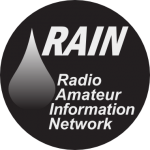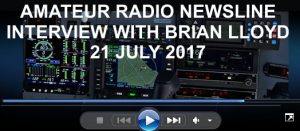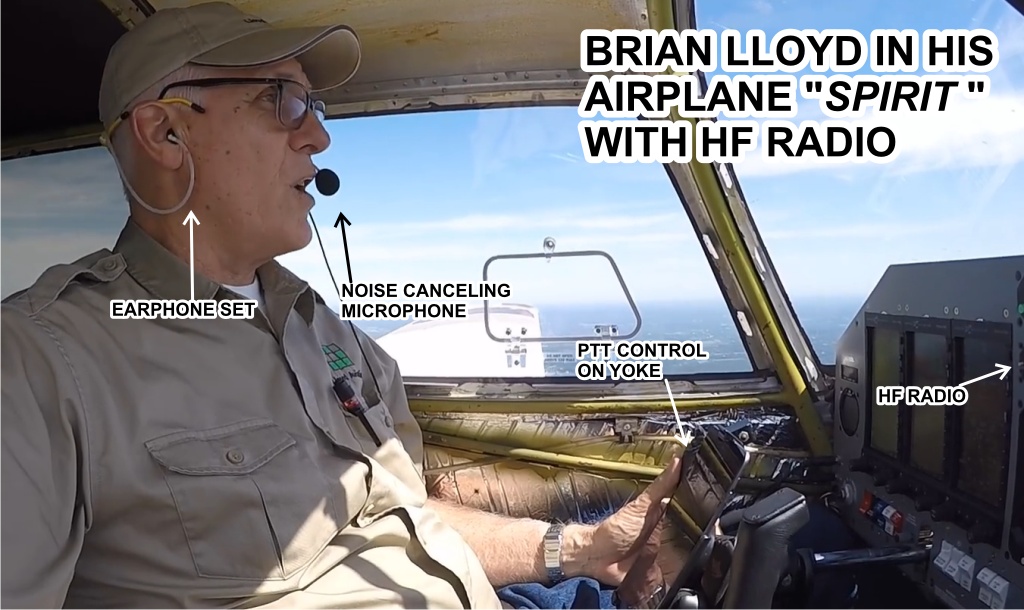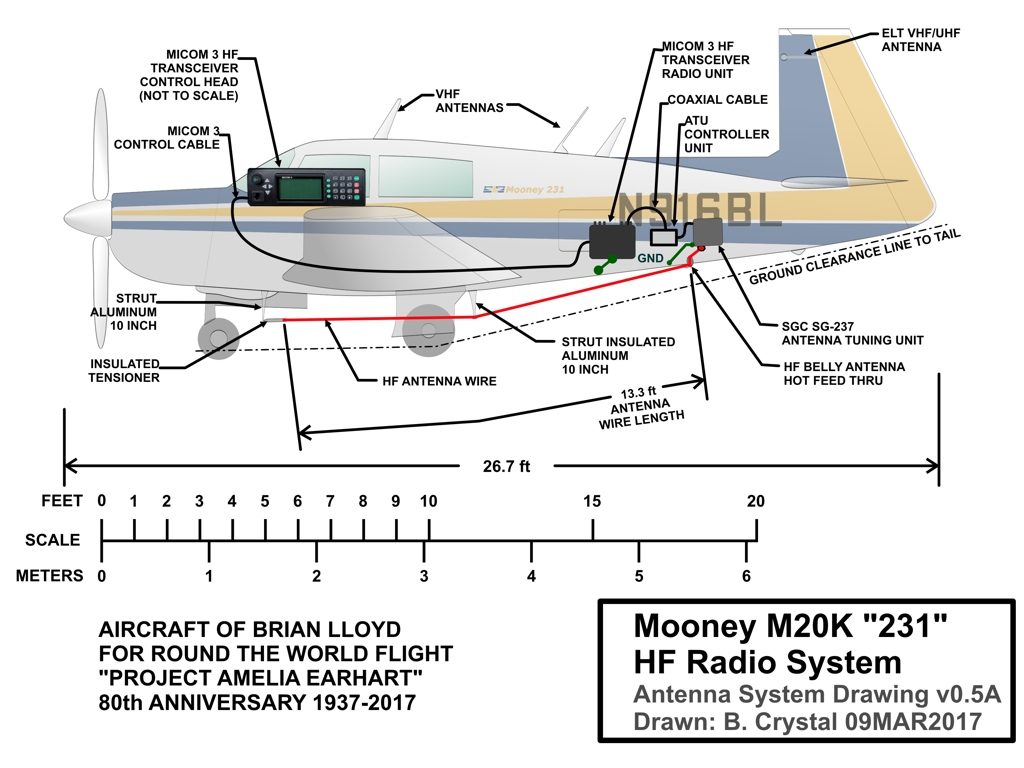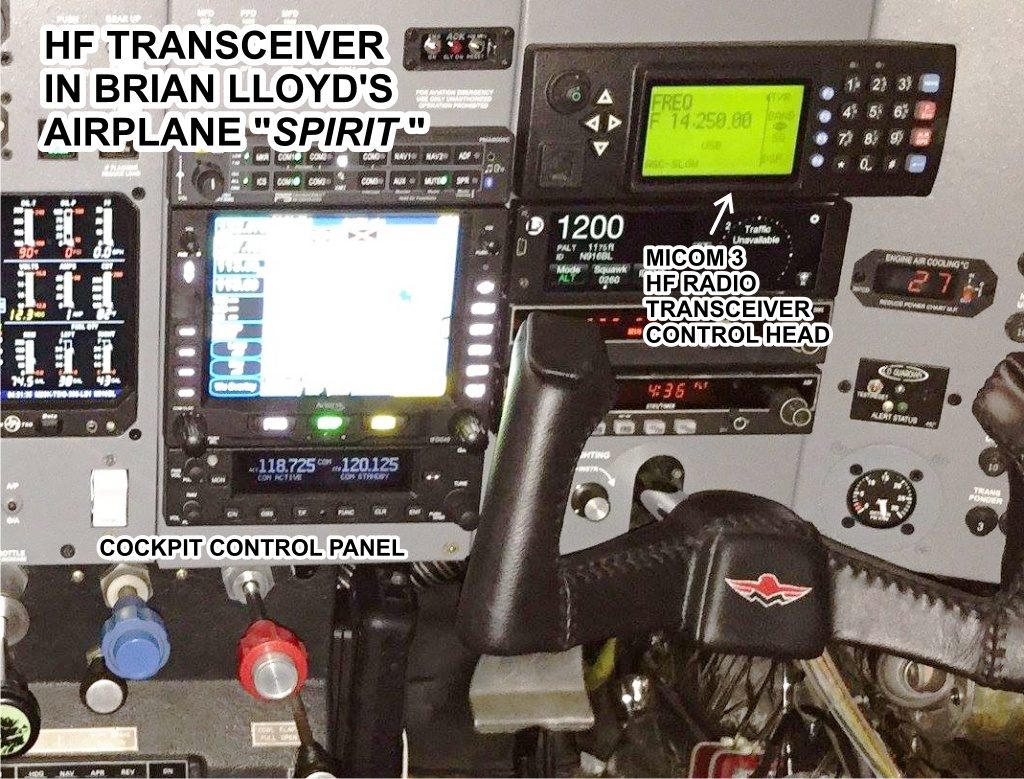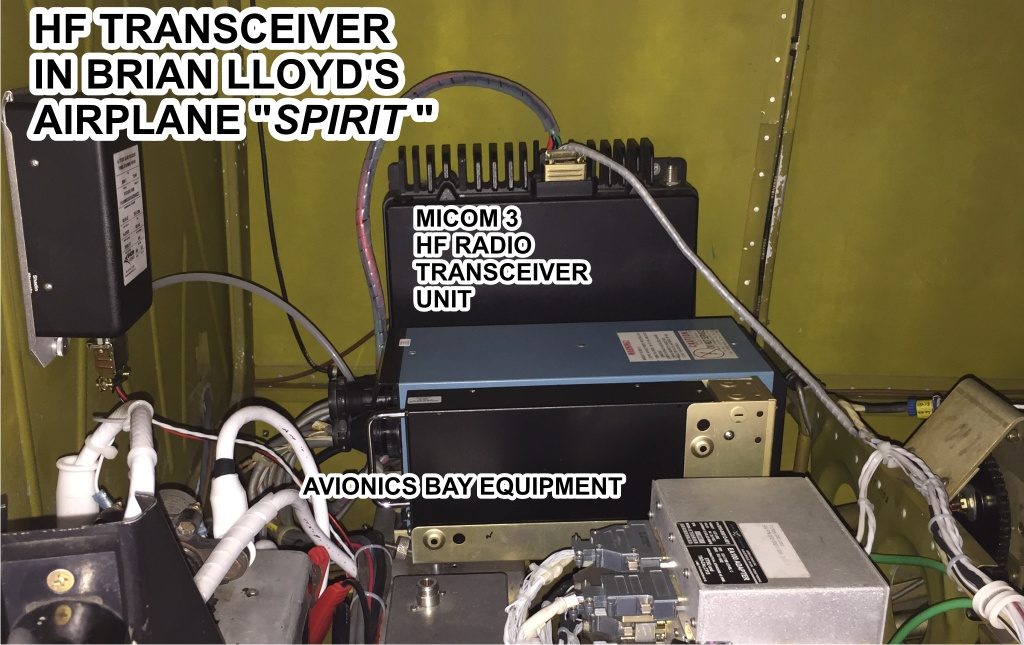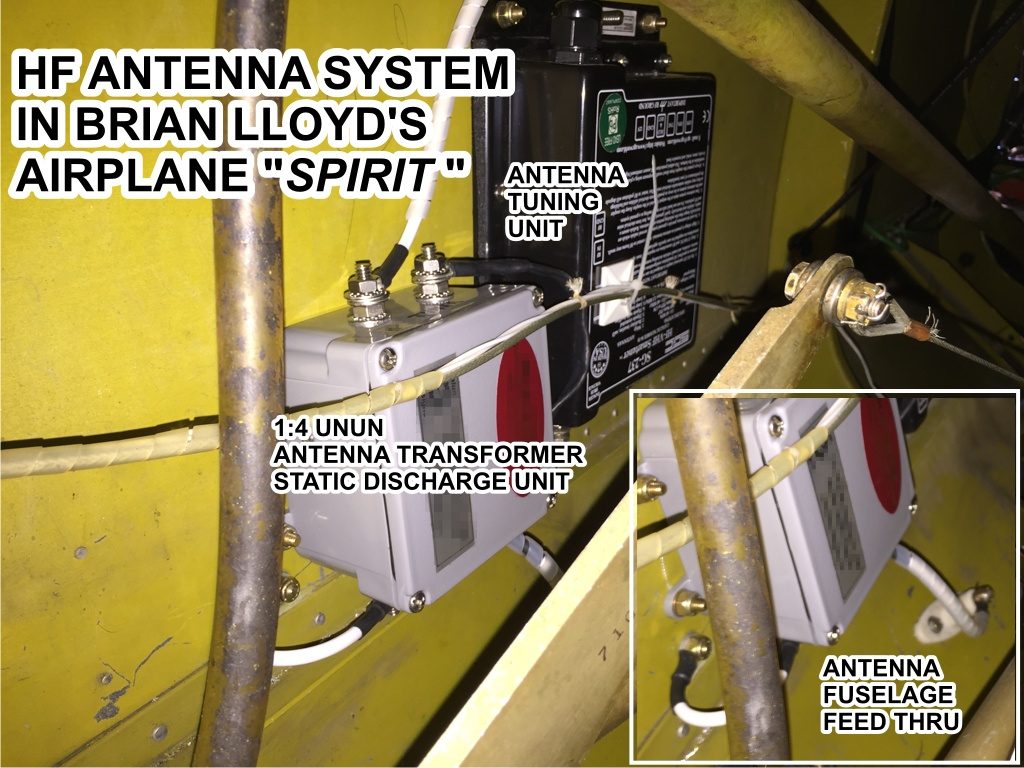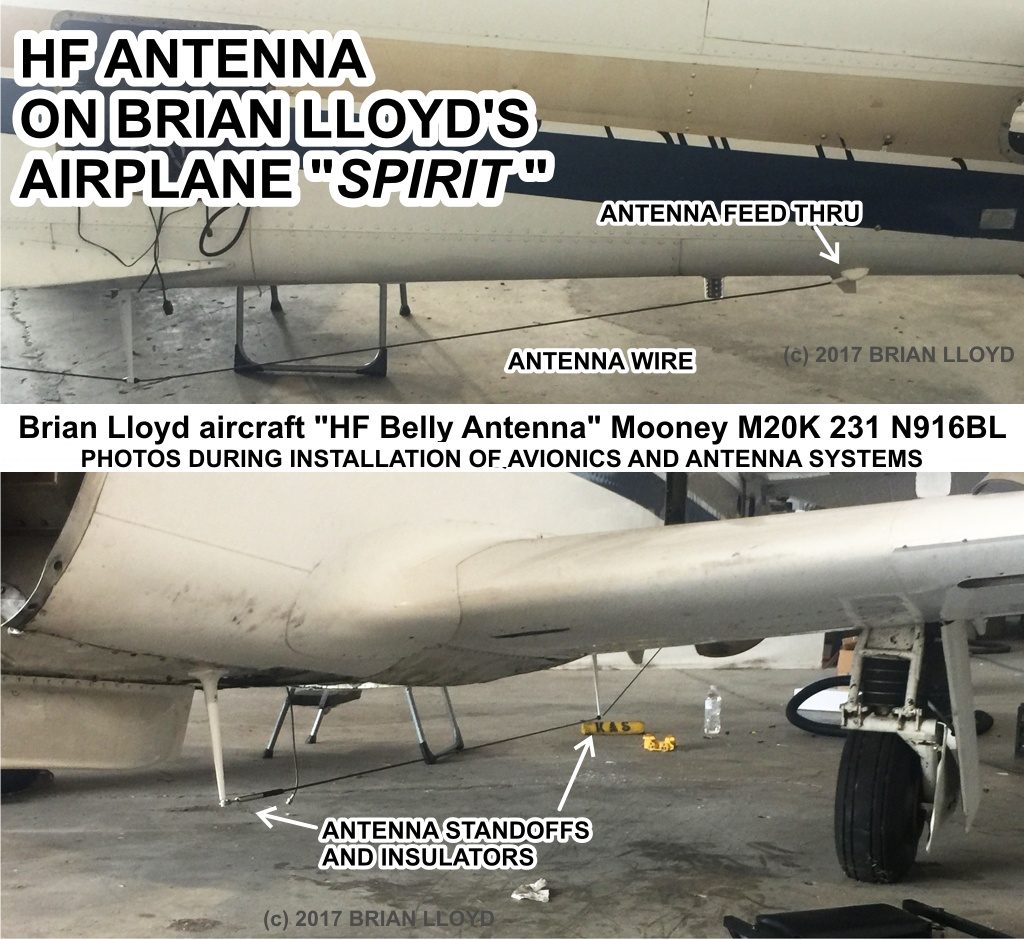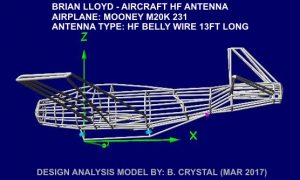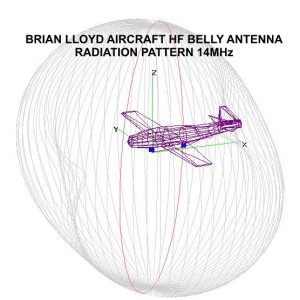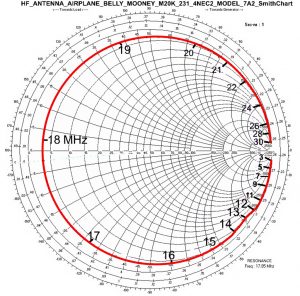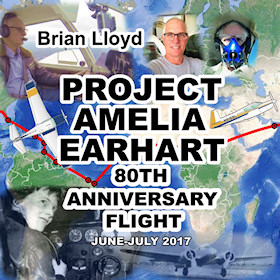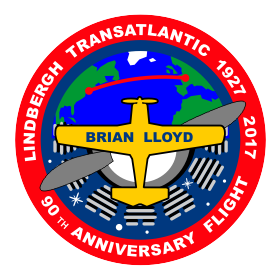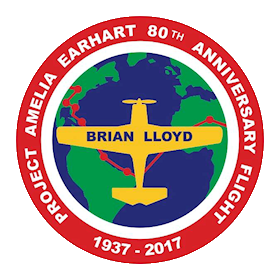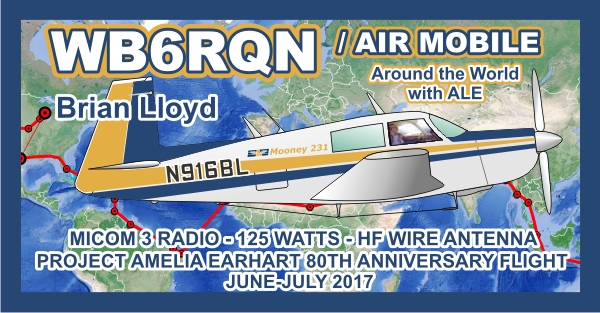
About Ham Radio on the Spirit
Brian Lloyd has a powerful radio system aboard the Spirit. The radio communicates on High Frequency (HF) shortwave using Single Sideband (SSB), and anyone can tune in to these transmissions who has the proper type of radio receiver. Listen for WB6RQN, that’s Brian’s Ham radio callsign. Ham radio operators around the world are invited to communicate with Brian while he is on the air in international airspace using the Ham bands. HF radio is dependent on ionospheric conditions to be heard over long distances, and it may change rapidly with the space weather or other factors.
![]()
Ham Radio Technical Information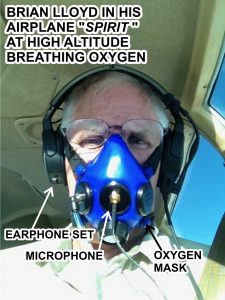
Ham Radio Callsign: WB6RQN
Operator Name: Brian
QSL Via: eqsl.cc Electronic QSL system
HF Radio: Mobat model Micom 3, commercial HF transceiver
HF Power: Maximum power 125 Watts, 2-30 MHz
HF Antenna: Tapered Towel Rack type Belly Wire, with Automatic Tuning Unit (ATU)
HF Modes of Operation: SSB Voice or ALE
Ham Callsign Phonetics: Whisky Bravo Six Romeo Quebec November , Listen:
Schedule of HF Radio Operation in 2017
31 May: Texas to Miami
01 June: Depart Miami. Embark on Round-the-World flight
02 June: Caribbean Sea area
03 June: South America area, Atlantic Ocean
05-08 June: South America, Atlantic Ocean, Brazilian Coast
09 June: Atlantic Ocean
10 June: Africa area
10 June: Eastern Africa area, Red Sea
11 June: Arabian Peninsula, Arabian Sea
12-15 June: South Asia, Bay of Bengal, Indian Ocean
16-18 June: SouthEast Asia, Adaman Sea, Indian Ocean
19-23 June: SouthEast Asia, Gulf of Thailand, Java Sea
24 June: Timor Sea area to Australia area
30 June – 06 July: Australia area, Tasman Sea, to New Zealand
23 July: New Zealand to Pago Pago, South Pacific Ocean
24 July: Howland Island overflight, Pacific Ocean
22-29 July: Hawaiian Islands, Pacific Ocean
30 July: Hawaii to California, Pacific Ocean
30-31 July: California area
31 July-03 August: Western USA to Kansas area
04 August: Kansas to Texas
Note: All dates and flight locations are approximate and tentative. Please see the Live Tracking Map for actual locations and flight movements.
Listen to The RAIN Report audio clip.
Listen to Audio: Amateur Radio Newsline interview with Brian Lloyd WB6RQN on the Project Amelia Earhart Round The World Flight:
3 minute audio clip.
Listen to Audio: Brian WB6RQN / Aeronautical Mobile over the Atlantic Ocean near Venezuela, on Amateur Radio HF SSB frequency 14346.0 kHz USB, 3 June 2017. Talking with many ham radio operators in Europe, North America, South America, and Caribbean: 7 minute audio clip.
Listen to Audio: Brian WB6RQN / Aeronautical Mobile over the central Australian outback , on Amateur Radio HF SSB frequency 14346.0 kHz USB, 2 July 2017. Talking with ham radio operators in Australia: 8 minute audio clip.
Ham Radio Frequencies of Operation for Spirit Flights
HF Frequencies for Ham Radio SSB Voice QSOs and DX:
- Ham QSO activity may occur at any time while the airplane is in International airspace, USA, or some other areas.
- Ham operation may happen while Brian is not busy with flight operations
- There may be unexpected interruptions during a QSO
- Please be especially courteous and patient, because his first priority is to pilot the plane.
| kHz | SSB | Description | Area |
| 14210.0 |
USB |
Voice QSO & DX (if split 14215.0) |
Worldwide |
| 14346.0 |
USB |
Voice QSO & DX |
Worldwide |
| 18117.5 |
USB |
Voice QSO & DX (if split 18122.5) |
Worldwide |
Simplex or Split? Most of the time, WB6RQN will use simplex, listening and transmitting on the same HF frequency. But, sometimes Brian may ask calling stations to transmit “UP 5” split. When using UP 5 split, your transmit frequency must be exactly 5 kHz above WB6RQN. The plane’s HF radio is channelized, and it does not have an S-meter.
 Click here for WB6RQN DX cluster spots
Click here for WB6RQN DX cluster spots
Brian said, “During the actual flight I can talk on ham radio when I’m not using the HF radio to make position and status reports to Air Traffic Control. I will probably get 10 to 15 minute windows when I will be able to work ham stations on the HF bands occasionally. I have never been a contester, so my QSO rate will probably be lower than most ham operators would like.”
HF Channel Frequencies for Ham Radio ALE Activity:
- Activity using common Amateur Radio standard 2G-ALE Automatic Link Establishment may occur on the following scanned channels when Brian is not busy with flight operations.
- ALE activity may occur at any time while the airplane is in International airspace, USA, or some other areas.
- Whenever the ALE soundings of WB6RQN are heard, operators are invited to call on any one of these channels using an ALE Individual Call and link with WB6RQN.
- When linked on an ALE Voice channel, the preferred QSO method is Upper Sideband Voice.
- If a text is to be sent, use AMD and include the AMD text within the initial Individual Call.
- Do not expect a wordy text reply, because there is usually no QWERTY keyboard connected to the ALE radio in the cockpit.
- Anyone copying soundings, calling, or other types of reports is encouraged to post ALE reception logs on the HFLINK.NET website.
| kHz | SSB | ALE | Area |
| 14346.0 |
USB |
Voice |
Primary Worldwide |
| 18117.5 |
USB |
Voice | Secondary Worldwide |
| 21432.5 |
USB |
Voice |
Worldwide |
| 14109.0 |
USB |
Texting |
Worldwide |
| 10145.5 |
USB |
Texting |
Worldwide |
| 7296.0 |
USB |
Voice |
North America |
| 7185.5 |
USB |
Voice |
Worldwide |
| 7102.0 |
USB |
Texting |
Worldwide |
| 5371.5 |
USB |
Voice |
North America |
| 5357.0 |
USB |
Voice | Worldwide |
SWL and UTE Monitoring of HF Aero Frequencies
For SWLs (Shortwave Listeners) or UTEs (Utility Monitors), it is possible to listen to Spirit on the Air Traffic Control (ATC) HF Aeronautical frequencies with an SSB (Single Sideband) receiver. More information about listening to Spirit on HF Aero, click here.
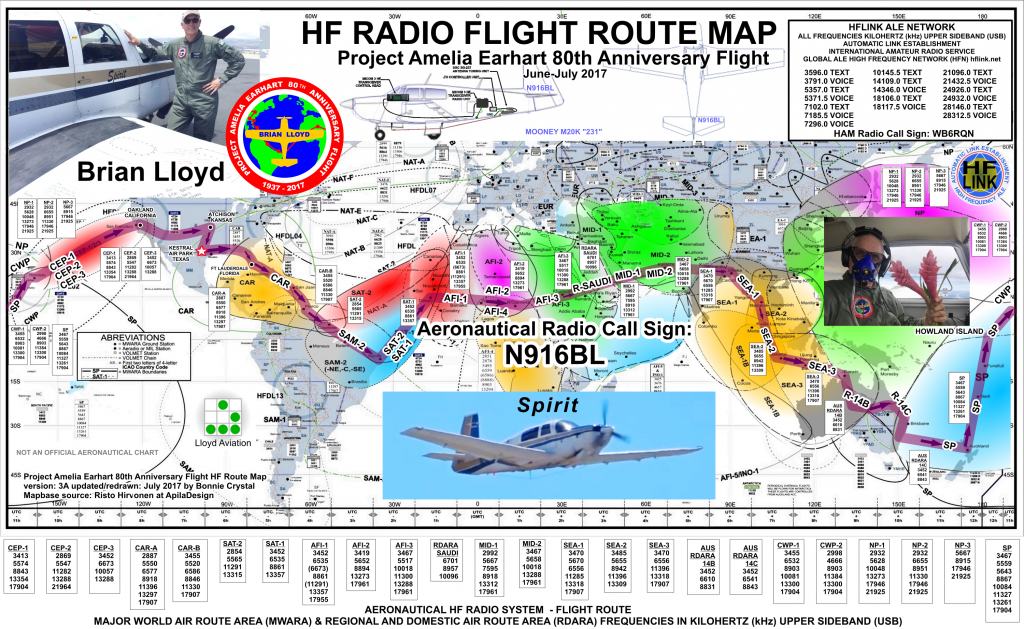
HF Radio Flight Route Map for Brian Lloyd aircraft N916BL Spirit for the 2017 flight retracing the Amelia Earhart route
Download HF Radio Flight Route Wall Map 11″ x 17″ pdf (16MByte)
HF_Radio_Flight_Route_Map_N916BL_Brian_Lloyd_Spirit_2017_Amelia_Earhart_route_3ca
Tour of the HF Radio System in Spirit
HF Antenna System Computer Model:
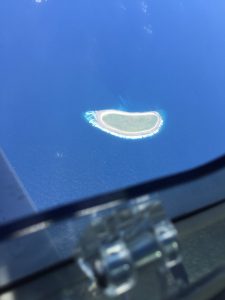
Howland Island from the aircraft Spirit photo by Brian Lloyd 24July2017 2200UTC ©2017 Brian Lloyd CC-BY 2.0
Historical Reference Paper on Post-Loss Radio Reception of Amelia Earhart Flight in 1937
This TIGHAR paper documents details on 56 credible signals heard by radio operators and short wave listeners all over the Pacific, North America, and Australia, in the days following the Earhart 1937 flight’s failure to arrive at Howland Island. Some of the radio signals were heard on the main frequencies 3105 kHz and 6210 kHz; other signals were heard on the harmonics of these. The transmitter utilized by the 1937 flight had substantial power output on the harmonic frequencies.

